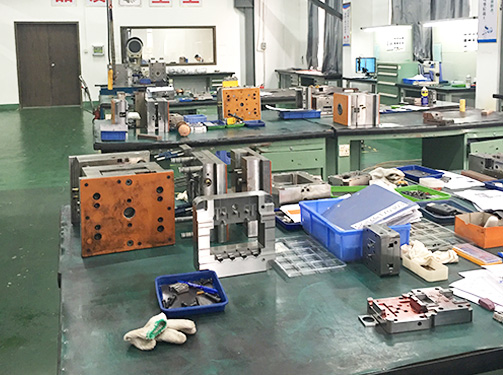

It is normal practice to use injection moulding to create a wide variety of injection molding machine spare parts, from the smallest parts to the whole body panels of vehicles.
For many people, the first thing that springs to mind when discussing moulds and tooling and moulding machine spare parts is the components that are produced using processes such as blow moulds or injection moulds.

The term "mould" refers to a block that has been hollowed out in order to produce a certain shape for the completed product. A wide range of materials, including aluminium, steel, alloys, and copper, may be employed in its construction. In addition, it consists of several components.
In this area, you'll find everything from pins and bases to lifters and ejectors to guides and bushings.
Choosing the right high precision mold is critical since it has such a significant impact on the final product's look. Having a thorough understanding of what the final product will look like is essential for the creator. As a result, the whole chain would have to be sacrificed, from the tiniest components to the most important roles they serve.

To better understand injection moulding and mould spare parts, you have a better understanding of the role that moulds play in the production process.
Any material may be pumped into a mould during the injection moulding process, which should come as no surprise. Metals, polymers, glass, and elastomers are just a few of the materials that may be employed in the manufacturing process.
Initially, the material is heated in a barrel before being poured into the mold's centre and cooled. Afterwards, the material becomes more firm when it cools, resulting in the finished product.

Blow moulding machine spare parts may be used to make hollow plastic components. Injection blow moulding, injection stretch blow moulding, and extrusion blow moulding are all viable options for completing this job. The plastic substance is blasted into the mould using air in each process. Afterwards, the plastic cools down, resulting in the final product.

Finding and acquiring the numerous injection molding spare parts and pieces of equipment required to construct something is what tooling involves. To name just a few, the most popular subfields are cutting patterns, equipment and jigs/fixtures, as well as gauges, dies, moulds, and dies themselves.
Make sure to keep in mind the impact the tooling process has on both product quality and the overall cost of the project. Because of this, if you are in charge of the process, you must proceed with extreme care.
A mold is a hollowed out block that sets the shape of the product being made. It can be made of different materials, the most common of which are aluminum, steel, alloys and copper. It also has different components. These components include pins, bases, lifters, ejectors, guides, bushings, and alignment devices
Injection moulding uses a special-purpose machine that has three parts: the injection unit, the mould and the clamp.
Guide pins and bushings. These provide the primary alignment of the mold halves. Parting line interlocks. These provide the precise centerline alignment between the A, B, and stripper plates.
